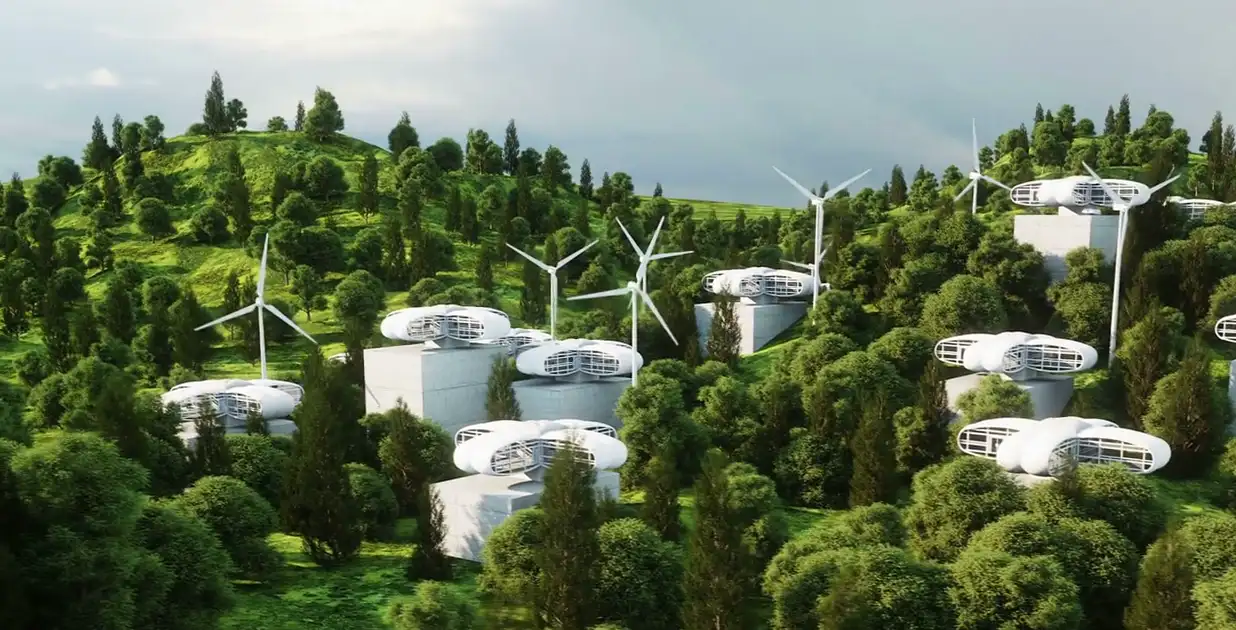Encyclopedia
Saúl Gopar Ensáztiga
What is a Smart Village?
- The technological development of the territories should not only be limited to smart cities.

In recent years, the concept of Smart Cities or Intelligent Cities has become more relevant both in its study and in its practice. This is premised on the application of the most recent technology to the development of cities for the satisfaction of needs and the rapid resolution of problems that arise there. However, following the line of the technological development of the territories, another less widespread concept emerged but with the same impact: Intelligent Towns or Smart Villages.
Beyond the differences at first sight between the two concepts, the development of Smart Towns entails solutions to various problems related to migration and the sustainable development of the territories that also benefit the development of Smart Cities. In this way, this article aims to provide an approach to the concept of Smart Village.
Definition of Smart Village
First of all, it is worth identifying the difference between city and town; Although these concepts can be approached from different perspectives, for this paper it is convenient to comment that a city is "a set of buildings and streets, governed by a town hall, whose dense and numerous population is usually dedicated to non-agricultural activities."1 On the other hand, a town is a “smaller population with fewer inhabitants than a city dedicated especially to activities related to the primary sector”.2 In this way, we can say that both concepts refer to human settlements but that they have as a difference the number of inhabitants that inhabit them and the economic activities that are carried out.
The United Nations Human Settlements Program, also called UN-Habitat, mentions: "since national definitions of urban and rural areas differ significantly from one country to another, it is difficult to compare these areas internationally." 3 Thus, it is commented that to facilitate international comparisons between these settlements, the United Nations Statistical Commission approved the use of degree of urbanization, which distinguishes three types of settlements: Cities: They have a population of at least 50,000 inhabitants in contiguous densely populated areas (more than 1,500 inhabitants per square kilometer); Localities (or towns) and zones of intermediate density: with a population of at least 5,000 inhabitants in contiguous zones whose density is a minimum of 300 inhabitants per square kilometer; Rural areas: which are mainly constituted by areas with low population density or uninhabited.4
Aerial view of urbanization on Luzon Island, Philippines.
Source: UN Habitat.
With this described, it is clear that a city and a town are distinguished mainly by the number of inhabitants that inhabit them, although the economic activities carried out in each one also influence, since the inhabitants of the towns work mainly in activities of the primary sector and the inhabitants of the cities work in activities of the secondary and tertiary sector of the economy. Now, as a definition of an Intelligent Town or Smart Village, we can point out that these:
They are communities in rural areas that use innovative solutions to increase their resilience and build on local strengths and opportunities. They rely on a participatory approach to develop and implement their strategy with a view to improving their economic, social and/or environmental conditions, in particular by mobilizing the solutions provided by digital technologies5
This definition arose in 2019, after the publication of the Pilot Project: Smart eco-social village by the General Directorate for Agricultural and Rural Development of the European Commission; Although it is not the first time that an Intelligent Town or Smart Village has been mentioned, it is pointed out that it is from this document that its definition becomes clearer. We can find another definition of Intelligent Town, which mentions:
Refers to rural areas and communities that have built their development strategy based on their existing strengths and assets, as well as by pursuing new opportunities related to new technologies, networks and digital services that support a better use of knowledge and innovative solutions for citizens, businesses and society.6
In short, a Smart Town is a human settlement of between 300 and 5,000 inhabitants, whose main economic activity is focused on the primary sectors and which uses new digital technologies to improve its economic, social and environmental conditions.
Technological tools used in Smart Towns
Among the different technological tools that the territories can use for their development, there are above all Information and Communication Technologies, which range from the Internet of Things to cloud computing systems. In order to better identify them, a list with the description of the most used technologies up to now in the development of Smart Villages will be provided below.
- Information and Communication Technology (Information and Communication Technology), which is considered as the driving force of the Smart Village that involves the collection, storage and processing of information data, and the communication between these and physical and virtual objects.
- The Internet of Things (Internet of Things), which comprises a global dynamic network with millions of objects that have self-configuring capabilities connected through the Internet that interact with end users in the physical environment.
- Radio Frequency Identification, which assigns identification tags to objects and devices that can become an Internet of Things ecosystem, but communicating with other devices through radio frequencies.
- Geographic Information System; It comprises a collection of hardware and software that efficiently captures geographic data, stores it for analysis, and displays it as required.
- Global Positioning System, a worldwide radio navigation system that has been formed from a constellation of satellites and their ground stations.
- Remote Sensing (Remote Sensing); method that involves extracting information about various objects on earth without being in direct contact, that is, collecting geospatial data, data from sensors and other remote devices to be used for analysis.
- Wireless Sensor Network (Wireless Sensor Network); It consists of a network with sensors that act as a storage transmitter for data acquisition and subsequent transmission.
- Computer in the cloud (Cloud Computing); a type of Internet-based computational method that allows hardware and software to be shared on demand.7
As mentioned at the beginning of this section, these technological tools are some of the most used in terms of the development of smart territories. However, the list is not exhaustive or definitive, since scientific and technological tools are constantly evolving.
Technology application areas in Smart Towns
Until now, it has been identified that the aforementioned technological tools can be applied in different systems of Smart Towns to enhance their development. These systems are: Intelligent Agricultural System; Intelligent Waste Management System; Intelligent Water Management System; Intelligent Health Monitoring System; Intelligent Energy Management System; Intelligent Education System; Intelligent Security System; Intelligent Climate and Environment System; Intelligent Digital Governance System.8
To mention a few examples, in the Intelligent Agricultural System, Internet of Things technology can be used to control sensors in the fields and improve their production; Sensors are used to irrigate the crops in cases where the water level or humidity are not beneficial, and with respect to livestock activities, the sensors can be implanted in the animals and thus help manage their health and nutrition.
The same sensor technology can help distribute water in Intelligent Water Management Systems, where sensors are connected to different water sources, such as lakes and rivers, and to storage deposits such as home water tanks; then, the same sensors send records at intervals to a database about the water level both in the sources and in the places of deposit, and in this way future water requirements can be predicted.
Final considerations
According to the United Nations Organization (UN), in 2018 55% of the human population lived in different cities of the world, and it was expected that this figure would increase by 13% by the year 2050.9 As a result of this, Priority has been given to the sustainable and technological development of these human settlements to lessen the consequences that the increase in population brings with it both in the environment and in the cities themselves.
The foregoing is an important process that must be carried out, however, another innovative solution can come from the technological development of Smart Towns; If the people who inhabit the towns have the job opportunities and public services necessary to lead a dignified life, migration to the cities will decrease, reducing the chances of failure that the implementation of strategies for the sustainable and technological development of cities currently has. .
Investment in the technological development of peoples must be more present in the decision makers of all countries and all localities, since in these there is a valuable opportunity to solve different problems that afflict humanity today. , and that living in an interconnected world, will affect us sooner or later.
Sources
1 Real Academia de la Lengua Española, “Diccionario de la lengua española”, 23a edición (2021). Recuperado el 21 de abril de 2021. Recuperado de: https://dle.rae.es/ciudad
2 Lexico, “Pueblo” (2021). Recuperado el 21 de abril de 2021. Recuperado de: https://www.lexico.com/es/definicion/pueblo
3 ONU-Habitat, “¿Cómo definir ciudades, pueblos, y áreas rurales?” (2021) Recuperado el 21 de abril de 2021. Recuperado de:http://onuhabitat.org.mx/como-definir-ciudades-pueblos-y-areas-rurales
4 Idem.
5 Junta de Andalucía, “¿Qué son los Smart Village?” (s/f). Recuperado el 21 de abril de 2021. Recuperado de: https://www.juntadeandalucia.es/organismos/agriculturaganaderiapescaydesarrollosostenible/areas/desarrollo-rural/juventud/paginas/boletin-proyectos-internacionales-numero-08-actualidad-02.html?fbclid=IwAR2s1oKl4cxHqL6Tkj5b3ltL6H6FsbzD9K4MkNiXstOX09Z5aNMlJRGFmSE
6 Mieczysław Adamowicz, Magdalena Zwolińska-Ligaj, “The ‘Smart Village’ as a Way to Achieve Sustainable Development in Rural Areas of Poland. Sustainability. No. 12. (Polonia: 2020). Recuperado el 22 de abril de 2021. Recuperado de:https://www.mdpi.com/2071-1050/12/16/6503#cite
7 Ibidem, pp. 10 – 12.
8 Ibidem, pp. 13 – 22.
9 Departamento de Asuntos Económicos y Sociales, “Las ciudades seguirán creciendo, sobre todo en los países en desarrollo” (2018). Recuperado el 8 de mayo de 2021. Recuperado de:https://www.un.org/development/desa/es/news/population/2018-world-urbanization-prospects.html

